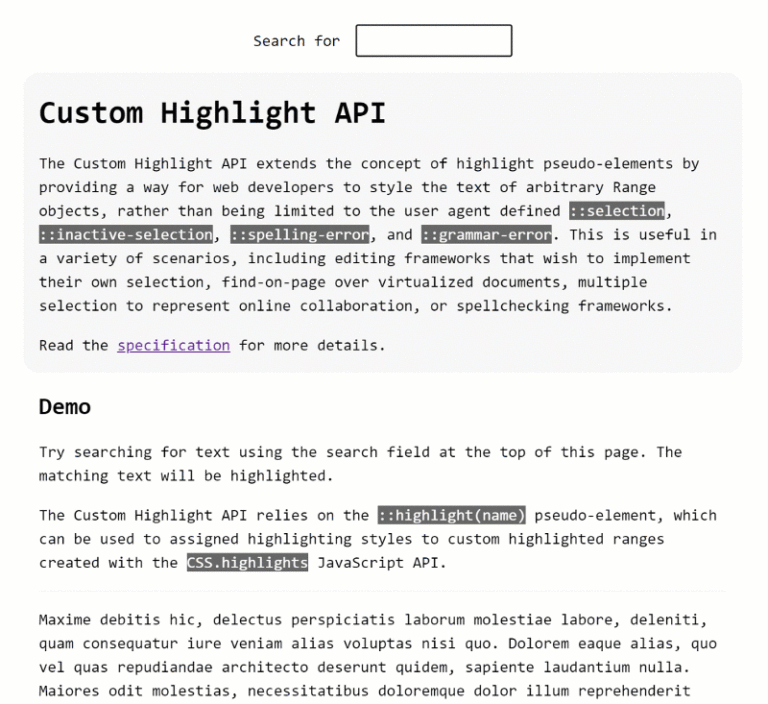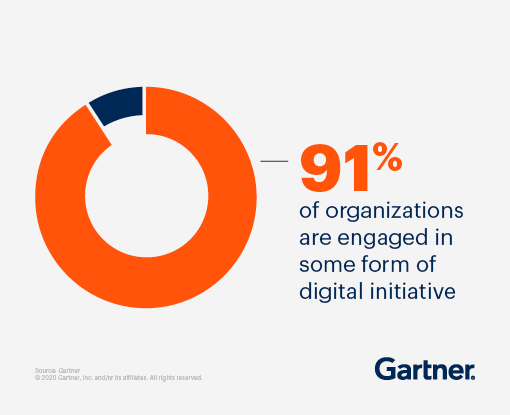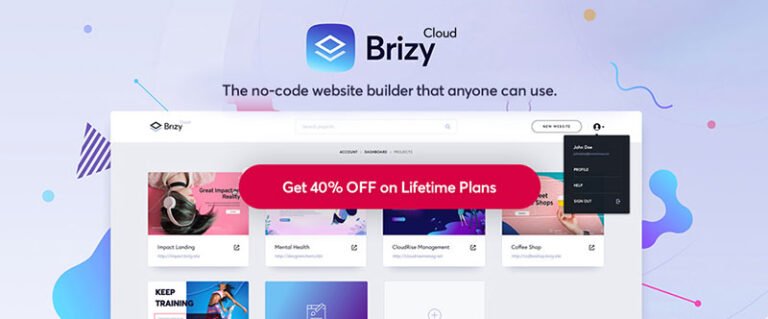
A look at the evolution of the data landscape, how technology is helping businesses solve for now, and how the data analysis that’s possible today can provide us with a new understanding of how we, as a society, can perform better in the future.
Perhaps the most dramatic outcome of the digital revolution is the amount of data that’s now collected and analyzed. IDC calculates that in 2010 the world created about two zettabytes (ZB) of digital information. If that were put into 1 GB thumb drives that were then laid end to end, it would make a line that could stretch across 184 million football fields. That sounds impressive, until you consider that the World Economic Forum figures there will be 44 ZB collected in 2020.
The World Economic Forum figures there will be 44 zettabytes (ZB) of digital information collected in 2020.
Getty
This growth in data produced and collected is profound—and as COVID-19 has caused disruption to economies, businesses, and lives around the world, it has become more urgent to not only marvel at the scale of all this data but also to understand how it’s being put to work.
Evolution of the data landscape
There has never in human history been such an information explosion. You could attribute this to the rise of smartphones, sensors, and connected vehicles and appliances, among other digital artifacts. Much of what we touch and work with now automatically generates data. But the real reason why we’re seeing this increase is the growing utility of data analytics and automated responses to analytic decisions.
The past decade’s data explosion created a virtuous circle of data analysis and action, leading to new insights, data creation, and data analysis. We’ve seen companies collect more data than ever before as they’ve raced to transform their businesses and make data-driven decisions.
To stay viable and thrive in this rapidly changing environment, businesses need to be good at anticipating what’s next and reacting in real time.
This has spurred all kinds of personalized, connected objects, such as industrial machinery that saves money by signaling when it needs maintenance. And it’s spurred services that combine digital information from traffic information, and social network graphing. It’s also brought greater efficiency to things like supply chains and consumer marketing, to name just a couple of examples.
This explosion also pushed other organizations to re-evaluate their strategies and look to cloud infrastructure to provide relief from legacy tools that could not keep up with the growing needs of the business.
Solving for now
There have been pandemics in human history. This is the first where people have had access to online digital technologies that enable things like working, schooling, seeing the doctor, grocery shopping, and even attending digital conferences from home—all necessary activities for suppressing the rate of infection. Some of these changes may be permanent, leading to structural changes in the society and the economy. Consequently, data growth and analytics-driven decision-making are likely to continue proliferating.
To stay viable and thrive in this rapidly changing environment, businesses need to be good at anticipating what’s next and reacting in real time. For example, with changing consumer demand patterns, retailers need to make their inventory management, supply chain infrastructure, delivery mechanisms, and customer experiences much more data-driven and dynamic.
Not surprisingly, we’ve seen for ourselves that they are leaning heavily on real-time and predictive analytics to do just that—it’s vital for their survival and success. Increasingly, they are also exploring the use of new industrial innovations like virtual showrooms, robotic manufacturing, and driverless delivery fleets in a post-COVID-19 digital economy. Adoption of these new technologies will create even more data and will further accelerate the use of sophisticated analytics.
Businesses are exploring the use of new industrial innovations in a post-COVID-19 digital economy. Adoption of these new technologies will create even more data and will further accelerate the use of sophisticated analytics.
Getty
In my role at Google Cloud, I’ve grown a profound appreciation for the core values of speed, scale, access, and flexibility that are at the heart of good data analytics technologies—in products like BigQuery and several more across the industry. The engineers behind these innovations anticipated and fostered a world with more data than most people could have dreamed of a decade ago.
Over the past few months, we’ve seen our technology rise up to the occasion to support businesses across all industries, along with researchers and government institutions who are using our technology in many incredible ways.
Through our global analytics platform, we’ve made a hosted repository of public datasets like the Johns Hopkins University Center for Systems Science and Engineering (JHU CSSE) dataset, the Global Health Data from the World Bank, and OpenStreetMap data free to access and query through our COVID-19 Public Dataset Program. These datasets remove barriers and provide access to critical information quickly, safely, and easily, eliminating the need to search for and onboard large data files.
Northeastern University is one such organization that has been able to leverage our data analytics tools during this time. According to Dr. Matteo Chinazzi, Associate Research Scientist at Northeastern University, “Our team models and forecasts the spatial spread of infectious diseases by quickly analyzing hundreds of terabytes of simulation data. With the help of BigQuery, we are able to accelerate insights from our epidemic models and better study evolution of an ongoing outbreak.”
Looking to the future
The data analysis that’s possible today can provide us with a new understanding of how to stay safe and how we, as a society, can perform better in the future. As all of us struggle with rapid changes, the ability to perform cheap, fast, and flexible analysis of the newest and most reliable information becomes even more critical to the way we work.
Serverless and no-ops cloud deployments will continue to automate many kinds of computing infrastructure, allowing customers to focus on running their businesses instead of managing infrastructure. As businesses require more and more real-time decision-making, streaming data becomes paramount to making real-time business decisions. With the continued democratization of machine learning, which can now be accessed with as little as a cloud API or a pretrained model, data analysts can quickly operationalize technology-driven initiatives that would have been prohibitively costly or time-consuming to develop just a few years ago. Additionally, scalable, flexible pricing and service options help more businesses analyze and react to a fast-changing world.
This is truer nowhere than in the healthcare industry. Doctors and nurses have been at the forefront of this pandemic, and being able to support companies that support healthcare workers is truly an honor. Wellframe, a digital health management platform, is one customer who has been using our analytics platform to support healthcare organizations.
Wellframe has already seen an 80% increase in weekly patient plan engagement, driving care improvements for providers, health plans, and clinicians.
According to Mohammad Jouni, CTO of Wellframe, with BigQuery, Wellframe has helped many health plans’ care management teams dramatically improve the medical experience for patients with long-term conditions. Wellframe and BigQuery together enable faster analysis and resolution of patient needs, improved clinician performance, and better predictive health outcomes. For example, Wellframe has already seen an 80% increase in weekly patient plan engagement, driving care improvements for providers, health plans, and clinicians.
A pandemic reminds us what is truly important, and what values we want to live and work by. The importance of those values is reflected in the way they’ve shaped the businesses built on them. Values such as accurate insight and rapid adjustment empower us as people to respond to new challenges with ever more data—delivered faster, from more sources, and for new purposes. The ingenuity of those people inspires us to add new features and capabilities to our analytics platform. Ten years into its success, Google Cloud’s petabyte-scale data warehouse continues to help customers cost-effectively run analytics at scale, with agility and efficiency.
This month, Google’s cloud data warehouse BigQuery turns 10. We got together to reflect on some of the technical milestones, memorable moments along the way, and think about what’s next for data analytics. Read the article.







